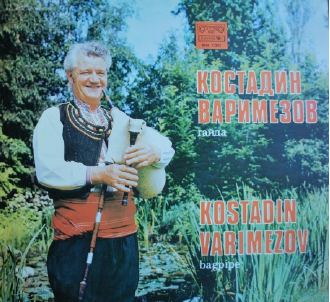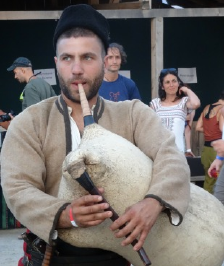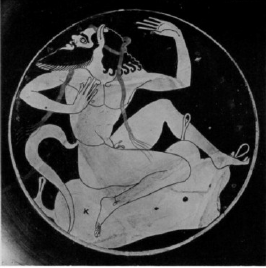The Bagpipe Society
A Bulgarian Fascination
Last year Jane Moulder asked me to write about my fascination with the traditional music of Hungary and in particular the Hungarian bagpipes, which I play as part of a duo with Ildiko Csige who is from Debrecen, but lives and works in Manchester.

The article explained how I came to be introduced to the music of Hungary. It was through the same medium that I also became enamoured with the music of Bulgaria. That medium was in the form of the American record producer Joe Boyd who brought the music of Bulgaria to the attention of British folk audiences in 1988 when he released two wonderful albums on his Hannibal record label; Balkana, The Music of Bulgaria and The Forest is Crying by The Trio Balgarka, who were, individually, Yanka Rupkina, Eva Georgieva and Stoyanka Boneva. Balkana was the collective name for the three women with the addition of Stoyan Velichko (kaval), Roumen Sirakov (tambura), Mihail Marinov (gadulka), Jimmy Hristov (teppan) and, as the sleeve notes described him, “Bulgaria’s most famous gaida player”, Kostadin Varimezov. Both LPs were recorded in the studios of Bulgarian Radio in Sofia; Balkana on 2nd and 3rd July 1987 and The Forest is Crying in March 1988. It was in the late 1980s when the Balkana group appeared for the first time in Manchester that I interviewed the women of Trio Balkana for my BBC Radio Manchester folk programme and also met Kostadin Varimezov at the hotel where they were staying. It was here that I bought my djura gaida for the sum of just £150. Kostadin had brought a few sets over with him to sell. He was a kindly gentleman and an exquisite player. He was an elderly man back then and sadly has since passed away.

Jon Swayne did a repair job on my gaida for me a few years back and commented that the instrument was a cut above others he had seen. The bag had split and I sent the whole gaida to Jon who said he had a spare bag. When I asked why he had just a spare bag he explained that a customer of his had bought a gaida but then, and only then, found out that he was allergic to goat. Jon fitted a standard hide bag which freed up the goat bag for my repair.
There are two types of bagpipe in Bulgaria; the smaller djura gaida and the larger kaba gaida.
Unlike most bagpipes, which are played exclusively against drones and can only play in one mode, the Bulgarian gaida in its homeland is often heard in ensembles with the kaval (an end blown flute), gadulka (a folk fiddle) and drums. And even when played solo it will often change key against its own drone. The bag is a whole goat, carefully skinned in one piece (more peeled than skinned) with the chanter (gaidunica) tied into the neck hole, the blow-pipe and drone (ruchilo) tied into the foreleg holes and the back end tied off. It is known as a dry bag, meaning the leather isn’t tanned, but simply turned inside out with the fur on the inside handling the moisture and only seasoned occasionally on the outside with lanolin.
The instrument pictured is of the djura gaida variety and the maker in unknown but probably from the town of Bourgas on the Black sea. The chanter is most probably of dryan wood (Eastern European dogwood; a dense, fine grained wood) and the drone, blowpipe and stocks of plum wood.
Another interesting feature it shares with other East European bagpipes is the single reed chanter. All Western European bagpipes have a double reed, much like a primitive oboe reed, but Eastern European bagpipes tend to have a single reed tied to a wooden stock, a little like a mini clarinet or saxophone mouthpiece. It is, quite simply, a small tubular length of cane with a tongue cut downwards to produce a sliver of cane which vibrates to create the sound. This gives it a more plaintive wailing tone, compared to the courser western bagpipes. It also makes the high notes the strong notes, unlike the Highland pipes which are notoriously weak when they reach up to their top note.

The kaba gaida is the deeper sounding of the Bulgarian bagpipes. It is characterized by a larger bag than the djura gaida with a long reverse conically bored chanter (gaidunitsa) which has a full chromatic scale and a single drone (ruchilo) which is made in three parts. The chanter is cylindrical or hexagonal with a slight curve at its lower end. The bag is inflated via a blowpipe (duhalo). The region where the kaba comes from is the Rhodope mountains as opposed to the djura gaida which is from the valleys of Thrace, Dobrudja and the Danube valleys. The most common key is in E but F and D are also available. According to tradition, the wooden parts are made of plum tree, whereas the reeds (piskuni) are of willow. The chanter is connected to the bag by a cow horn stock; the bag is made of the skin of a young goat. Both chanter and drone use single reeds and are tuned to the same note.
My kaba was made for me in Bulgaria in 2015 by Nicolay Belyashki. Belyashki is one of the very few and probably the youngest among the makers of kaba gaida and was born in 1983. He has played the gaida since childhood and started to make gaidas during his teen ages. He keeps the traditional way of making bagpipes using once-piece elder reeds and natural materials. Nikolay believes that this way of making the gaidas make them alive and gives that special sound that touches the soul. His gaidas are available for sale on kabagaida.com with a year’s support, a free online lesson and huge amount of free online training materials.

It was back in the 1970s and 1980s during my days playing with the band Rebec, where I played the Gaita Gallicia and Bob Cross played Northumbrian pipes and Flemish bagpipes that my interest in bagpipes really took off and my collection of bagpipes started to grow; the collection now includes bagpipes from Hungary (duda), Bulgaria (djura and kaba), Scotland, England (border pipes and Leicestershire smallpipes), Sweden (sackpipa), Russia (volynka), Lithuania, Germany (dudy and hummelchen), Italy (zampogna), Brittany (biniou), France (bechonnet) Greece (tsambouna), Serbia, Croatia (diple), Turkey (tulum), Bohemia (bock dudy) and Tunisia (mizwad).
Selected discography:
- Balkana The Music of Bulgaria Various Atists. (Hannibal HNCD1335)
- The Forest is Crying The Trio Bulgarka (HNCD1342)
- Kostadin Varimezov Solo Album (Balkanton BHA11283)
- Folk Music of Bulgaria Collected and Edited by A.L.Lloyd (Topic 12T107)
- Gaida Musical Instruments in Bulgaria Various Artists (Gega GD106)
- Bulgarian Bagpipe Various Artists (Balkanton ADD060251)
- Data Processing Notice (GDPR)
-
@BagpipeSociety on X (formally known as Twitter)
-
TheBagpipeSociety on Instagram
-
 BagpipeSociety on Facebook
BagpipeSociety on Facebook
Something wrong or missing from this page? Let us know!
